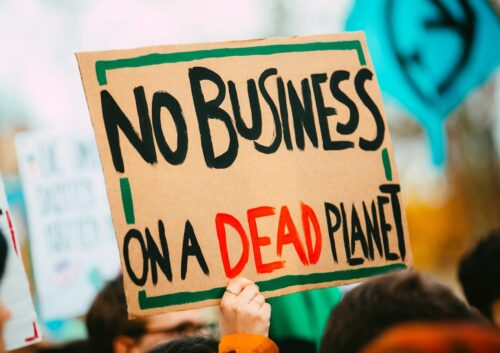 The United States Department of Agriculture (USDA) began funding research into trash-fed crickets as an alternative to conventional and “unsustainable” protein production in July 2023, a federal grant listing shows.
The United States Department of Agriculture (USDA) began funding research into trash-fed crickets as an alternative to conventional and “unsustainable” protein production in July 2023, a federal grant listing shows.
The $130,000 grant supports research that “addresses the need for more cost-efficient production of crickets as a sustainable protein source,” according to the listing. [emphasis, links added]
Specifically, the grant will support research into using municipal landfill waste to feed crickets that will later be harvested for human consumption.
USDA awarded the grant to Mighty Cricket Inc., a private firm that sells cricket flour, cricket protein powder, and cricket oatmeal.
The agency believes that using landfill waste to feed crickets could help the firm “procure cricket feed at lower cost than what is available on the market,” leading to savings that could then be passed along to the consumer.
USDA’s grant listing criticizes traditional animal farming for being too resource-intensive and too harsh on the environment.
“Conventional protein production poses a substantial strain on the ecosystem, requiring unsustainable quantities of water, land, and feed as inputs,” the grant description reads. The grant description also calls “conventional” farming a “significant source of greenhouse gas emissions.”
The grant listing claims that the demand for bug protein has increased in recent years due to “public awareness of the need for more sustainable food sources.”
“To sustain the world’s growing population, food production practices need to dramatically shift towards resource conservation,” the grant continues. Bug farming is “one solution” to that problem, according to the USDA grant description.
Mighty Cricket’s website stresses the environmentally sustainable nature of cricket cultivation, pointing to lower land use, less waste, decreased carbon emissions, less intensive water use, and reduced energy consumption, among other things.
Influential organizations like the United Nations and the World Economic Forum (WEF) have published materials expressing support for introducing insects into the Western diet.
A 2022 article published by WEF argues that incorporating insects into our diet could be an effective way to combat climate change.
Another WEF article, meanwhile, argues that the growing global population will heighten the need for new sources of protein, such as insects.
Moreover, a 2013 UN report urged people to begin eating insects to reduce world hunger and pollution.
Read rest at Daily Caller



















Drug residue in waste is going to be consumed by cricket-eaters. Including hormone pills, cancer chemotherapy etc.
Some years ago a million dollars worth of frogs were being shipped in a pressurized cargo area on a plane to be used in restaurants. At the time a million dollars was worth more than today. The frogs were dead on arrival. The blame game that followed had fingers pointed at the airline and the plane’s manufacture. The investigation showed that the company that shipped the frogs included a large amount of garage for the frogs to eat during the flight. In rotting the garage the bacteria removed all of the oxygen from the air. It is a bad idea to try to put garbage back into the food chain.
Error, I met garbage, not garage.
Not all households have good practices with their garbage. Insecticides, herbicides, and motor oil are put in the trash by some. Heavy metals also make it into the trash. Even is someone isn’t grossed out by the idea of eating bugs, using bugs that eat garbage is a bad idea. For the people who are willing to eat bugs, they should be given the safety of the bugs eating safe food such as grain.
Biden the Blunder once again pours our taxes down the Drain to get is to wat yucky bugs and so far nothing from the PETA Idiots
Very bad idea. If you remember Britain’s calamity with BSE (mad cow disease), the cause was determined to be the feeding carrion to livestock. Some of the carrion was salvaged and imported from India’s Ganges River, some from dumpsters behind British restaurants. Why dump garbage into our food chain when billions of bushels of grain are being used for biofuels?